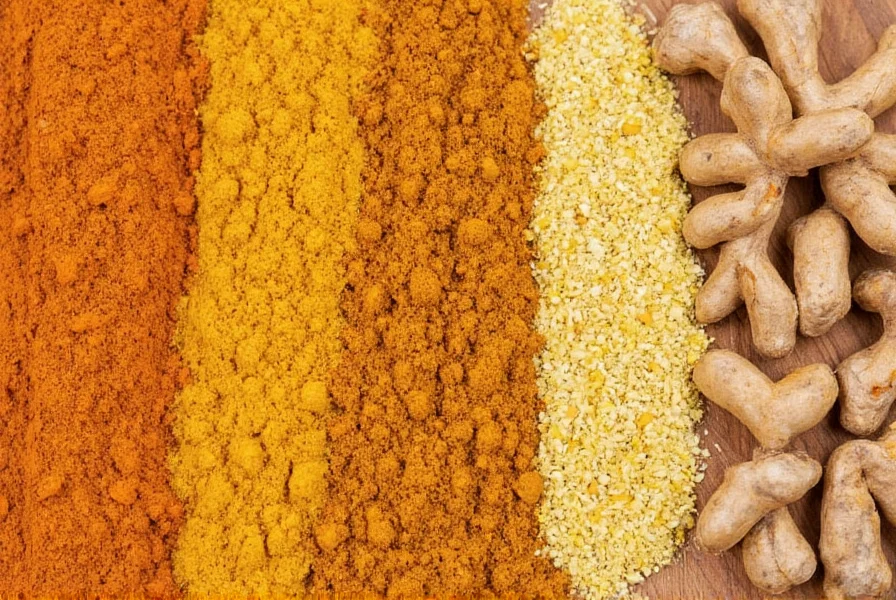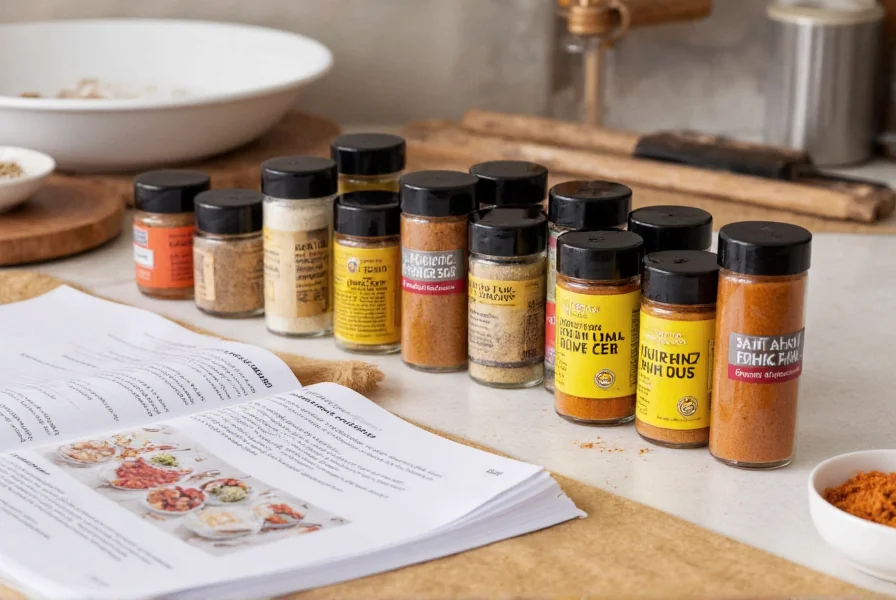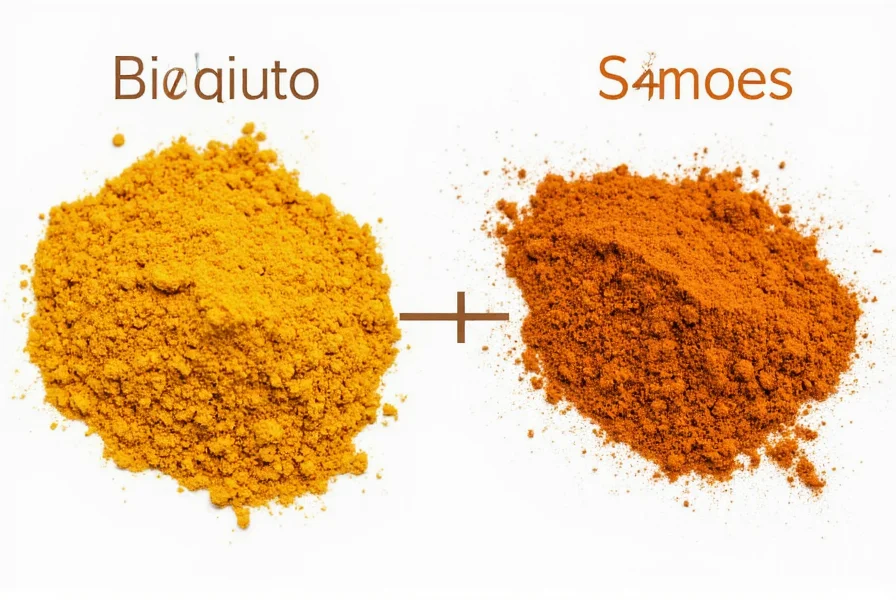Running out of turmeric mid-recipe can disrupt your cooking flow, but several effective alternatives exist. Whether you need to replicate turmeric's distinctive golden hue, earthy flavor, or both characteristics, understanding the right substitution for turmeric spice ensures your dishes maintain their intended profile without compromising quality.
Why You Might Need Turmeric Substitutes
Turmeric's unique combination of vibrant color and earthy, slightly bitter flavor makes it challenging to replace. Common reasons for seeking turmeric alternatives include:
- Running out of turmeric unexpectedly
- Addressing dietary restrictions or allergies
- Adjusting flavor intensity for sensitive palates
- Finding more accessible or affordable options
- Creating similar visual appeal without turmeric's distinct taste
Top Turmeric Spice Substitutes Compared
| Substitute | Flavor Match | Color Match | Best Ratio | Best Recipe Applications |
|---|---|---|---|---|
| Curry Powder | ★★★★☆ | ★★★☆☆ | 1:1 | Curries, stews, rice dishes |
| Saffron | ★☆☆☆☆ | ★★★★★ | ⅛ tsp saffron = 1 tsp turmeric | Risottos, paella, delicate sauces |
| Ginger | ★★★☆☆ | ★☆☆☆☆ | ½ tsp ginger = 1 tsp turmeric | Marinades, stir-fries, baked goods |
| Annatto | ★☆☆☆☆ | ★★★★☆ | ¼ tsp annatto = 1 tsp turmeric | Cheeses, butter, rice dishes |
| Paprika | ★★☆☆☆ | ★★★☆☆ | ½ tsp paprika = 1 tsp turmeric | Roasted vegetables, soups, meat rubs |
Detailed Analysis of Each Turmeric Alternative
Curry Powder as Turmeric Replacement
Curry powder provides the most comprehensive turmeric substitute for flavor replacement since it typically contains turmeric as a primary ingredient along with complementary spices like coriander, cumin, and fenugreek. When substituting curry powder for turmeric, use equal amounts, but recognize that you'll introduce additional flavors. This works exceptionally well in Indian and Southeast Asian dishes where complex spice profiles are expected. For those specifically seeking natural turmeric substitute without strong flavor changes, curry powder delivers balanced results.
Saffron for Color Replacement
Saffron offers the closest visual match to turmeric's golden hue but comes with a dramatically different flavor profile and higher cost. Use saffron when color matters more than flavor replication, such as in dishes like bouillabaisse or certain rice preparations. The substitution ratio requires careful measurement: approximately ⅛ teaspoon of saffron threads equals one teaspoon of turmeric. For budget-conscious cooks exploring affordable turmeric spice alternatives, saffron works best in small-batch applications.

Ginger for Earthy Flavor Profile
Fresh or ground ginger provides the earthy notes similar to turmeric but lacks the vibrant color. Use half the amount of ginger compared to the turmeric quantity specified in your recipe. Ginger works particularly well in marinades, stir-fries, and baked goods where turmeric's color isn't essential. This substitution proves valuable for those needing healthy turmeric alternatives with similar health benefits, as both spices contain beneficial compounds, though with different properties.
Annatto for Color Without Strong Flavor
Annatto seeds or paste deliver vibrant color with minimal flavor impact, making them ideal when turmeric's primary role is visual rather than taste-related. Common in Latin American cuisine, annatto provides a golden-orange hue similar to turmeric but with a slightly peppery, nutty flavor. Use one-quarter teaspoon of annatto for every teaspoon of turmeric required. This represents an excellent option for color-focused turmeric replacement in dairy products like cheese or butter where strong flavors would be undesirable.
Substitutions to Avoid
Not all yellow spices make suitable turmeric replacements. Avoid using:
- Mustard powder (overpowering flavor)
- Cumin (different earthy profile, brownish color)
- Chili powder (adds heat without golden color)
- Food coloring alone (provides color without flavor complexity)
These alternatives create dishes that deviate significantly from the intended flavor profile when seeking effective turmeric spice substitution in recipes.
Practical Tips for Successful Substitution
When replacing turmeric in your cooking:
- Consider whether color or flavor matters more in your specific recipe
- Start with less substitute than recommended, then adjust to taste
- Combine substitutes when needed (e.g., paprika for color plus ginger for flavor)
- Remember that liquid-based substitutes like saffron tea may require reducing other liquids
- Document your substitutions for future reference as best turmeric alternatives vary by recipe
Special Considerations for Health-Conscious Cooks
Many seek turmeric substitutes due to its celebrated health properties. While no single substitute replicates curcumin (turmeric's active compound), combining ginger and black pepper creates a synergistic effect with some overlapping benefits. For those exploring anti-inflammatory turmeric alternatives, consider incorporating multiple beneficial spices rather than seeking a single replacement.

Conclusion
Selecting the right turmeric substitute depends on your specific culinary needs and available ingredients. Understanding the distinction between replacing turmeric's color versus its flavor profile helps determine the most appropriate alternative for each situation. By keeping common substitutes like curry powder, saffron, or ginger in your pantry, you'll never need to abandon a recipe due to missing turmeric. The key to successful spice substitution for turmeric in home cooking lies in knowing which characteristic matters most in your particular dish and choosing accordingly.
Frequently Asked Questions
Can I substitute paprika for turmeric in curry?
Yes, but with limitations. Paprika provides similar color but lacks turmeric's earthy flavor. Use half the amount of paprika compared to turmeric and consider adding a pinch of ginger to approximate turmeric's flavor profile. This works best in tomato-based curries where other strong flavors dominate.
What's the best turmeric substitute for golden milk?
For golden milk, saffron provides the closest color match but significantly alters the flavor. A better alternative is to use equal parts ginger and a small amount of annatto for color. This combination maintains the beverage's health properties while delivering a similar visual appearance without dramatically changing the expected flavor profile.
Does black pepper work as a turmeric substitute?
Black pepper isn't a direct substitute for turmeric as it serves a different purpose. However, it's often used alongside turmeric substitutes because it enhances the bioavailability of curcumin. When replacing turmeric, consider black pepper as a complementary addition rather than a replacement, using it at standard seasoning levels (⅛-¼ teaspoon per recipe).
How do I substitute fresh turmeric root?
For fresh turmeric root, use double the amount of ground turmeric (1 inch fresh = ½ tsp ground). When substituting other ingredients for fresh turmeric, increase quantities by 50% compared to ground turmeric substitutions, as fresh roots have more intense flavor. Grated ginger works particularly well as a fresh turmeric alternative in juices and raw preparations.
Can I use mustard powder as a turmeric substitute?
Mustard powder makes a poor turmeric substitute due to its strong, pungent flavor that dominates dishes. While it provides some yellow color, the resulting taste profile differs significantly from turmeric's earthy notes. If absolutely necessary, use no more than ¼ teaspoon mustard powder per teaspoon of turmeric required, and only in strongly flavored dishes like cheese spreads or robust marinades.











 浙公网安备
33010002000092号
浙公网安备
33010002000092号 浙B2-20120091-4
浙B2-20120091-4